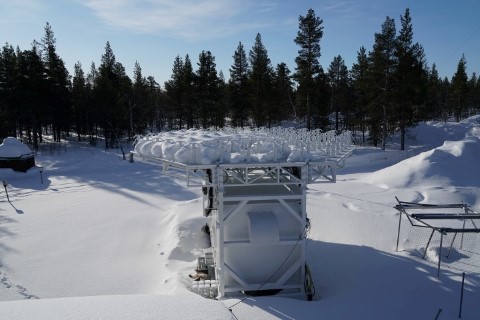EISCAT-3D Experiments

Experiments on the new EISCAT-3D radar will be different to those that operate on the current EISCAT radars. There are a number of different criteria that need to be considered
- how many beam? 10, 100, 1000?
- wide vs narrow beam?
- beam patten? cross, circle, all-sky?
- integration time per beam?
- remote beam intersection?
- high vs low power transmission?
- trigger requirements?
...and probably more. Most of these will strongly depend on the particular phenomenum that your experiment will be targeted at, or what additional data from support instruments that you are using.
Experiments are still being developed for EISCAT-3D and there is an opportunity to contribute to the development of these new experiments and to influence the design of the new common programmes. It is intended that an international group will be formed to collect ideas for experiments and hopefully work with the EISCAT 3D team to make those ideas a reality.
Below we present some ideas that have been put forward for new experiments, if you have suggestions, no matter how general, please forward the details to the EISCAT support group
Auroral Arc
This experiment is focused on small-scale observations of auroral arcs, using a grid of tightly spaced 3x3 beams, centred on the field-aligned position. Additional outrigger beams suurround this central grid about 3 degrees away from it. This is optimised for studying aurora, measuring electric fields across and adjacent to an arc. The time resolution would be of the order of 10 ms, with high range resolution (~100 m) and covering a relatively short range (90 km to 200 km).
This experiment could be adapted to work at higher range resoloution (few 100 m) at longer range (60 km to 600 km) and longer temporal resolution. This could easily replace the current CP1 and CP2 experiments. The high resolution version would replace the arc1 special programme.
Fans
A cross of widely spaced fans of beams. These would cover a wide range of elevations giving observations in the north-south and the east-west directions. The fans would provide moderately low elevation measurements to capture the ionospheric convection pattern, whilst also providing small scale vectors for turbulence and field aligned current studies. The concept could be replaced by rapid switching between low elevation and a tight set of beams (similar to Auroral Arcs above). A lot would depend on the available range and temporal resolutions, particularly with the beam tilted at low elevation. This could work in concert with the ESR low elevation acting as a combined CP3 and CP4.

